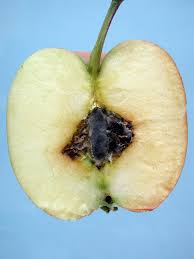Agriculture disaster
Agriculture is the one most common sector that is affected by various disaster such as cyclones,
floods and droughts.resulting in disruption of people's livelihood and adding to the risk, damage
and stress of disasters as a substantial part of the population depends on agriculture for its livelihood.
Firstly we have to know about What is disaster?
A sudden accident or a natural catastrophe that causes great damage, causes human, material, and economic or environmental losses.
Now we will discuss about Agriculture disaster, firstly know that that What is agriculture disaster?
A sudden and destructive change in the environment either affecting or caused by land cultivation or the raising of crops or livestock. in developing countries the agriculture sector absorbs 23 percent of the total damage and losses.
Type of Agriculture disaster that affect land and livelihood these are:-
- Droughts
- Floods
- Earthquake
- Cyclone
- pest and disease
1. Drought
A drought is defined as "a period of abnormally dry weather sufficiently prolonged for the lack of water to cause serious hydrologic imbalance in the affected area. only 19% damages is recorded in the agriculture sector.
Drought continues to challenge agricultural systems across Africa. The
extreme vulnerability to rainfall variability in the arid and semi-arid areas of
the continent and the poor capacity of many soils to retain moisture result in
an often devastating impact on the sector.
Karnataka is the one of the most drought affected state in the India. Cereals and oilseed crops are most affected crops due to drought. Drought increase the attack of the pest in the field and reduce the yield. due to drought it leeds to reduced the soil moisture and nutrients in the soil.
2. Floods
A flood is an overflow of water that submerges land that is usually dry. In the sense of "flowing water", the word may also be applied to the inflow of the tide.
Floods cause damage to standing agricultural crops and can also drain away the top soil that makes the land barren. Floods cause damage to all fixed assets that are submerged in flood waters. Any other property that cannot be removed to safe places during floods is also damaged. When storms are sudden and widespread, the damage is greater due to the difficulty of removing property to safer places. In such cases people may also be unable to go to safe places and drown.
3. Earthquake
An earthquake is the shaking of the surface of the Earth resulting from a sudden release of energy in the Earth's lithosphere that creates seismic waves.
Earthquakes sometimes trigger tsunamis, landslides and occasionally volcanic activity. Earthquakes impact on food security and agriculture-based livelihoods through: loss and injury of family members and workforce. loss of crop yields and livestock,damage to irrigation systems damage to people’s homes, animal shelters, stock areas and business premises.
4. Cyclone
Cyclones are powerful storms that have winds in excess of 119 kilometres per hour (74 MPH). These wind storms can develop either as a result of a confluence of warm and cold winds over the ocean following a thunderstorm or when differing areas of wind pressure conflict.
Cyclones in coastal areas severely affect all these components of agriculture sector through direct damage by high speed wind, torrential rain and extensive flooding. High tide may bring in saline water and sand mass making the fields unsuitable for agriculture.
5 Pest and disease
Pests and diseases can spread rapidly, regardless of national boundaries, with periodic outbreaks that can have disastrous consequences for crops, forests and livestock. The most dangerous plant pests are locusts and other types of grasshopper, armyworm and birds.
plant pests and diseases can easily spread to several countries and reach epidemic proportions. Outbreaks and upsurges can cause huge losses to crops and pastures, threatening the livelihoods of vulnerable farmers and the food and nutrition security of millions at a time.
Locusts, armyworm, fruit flies, banana diseases, cassava diseases and wheat rusts are among the most destructive transboundary plant pests and diseases. Plant pests and diseases spread in three principal ways:
- trade or other human-migrated movement
- environmental forces – weather and wind borne
- insect or other vector-borne – pathogens




















